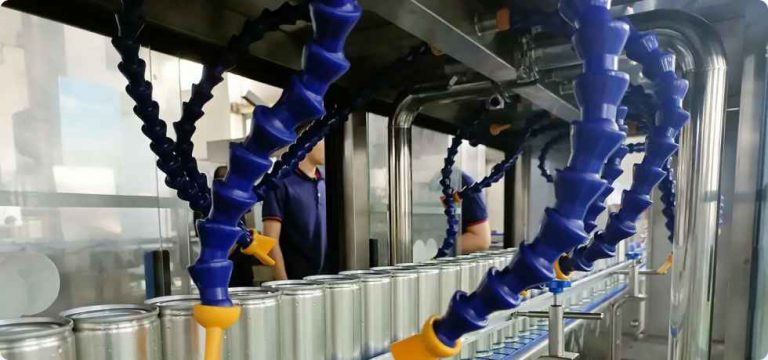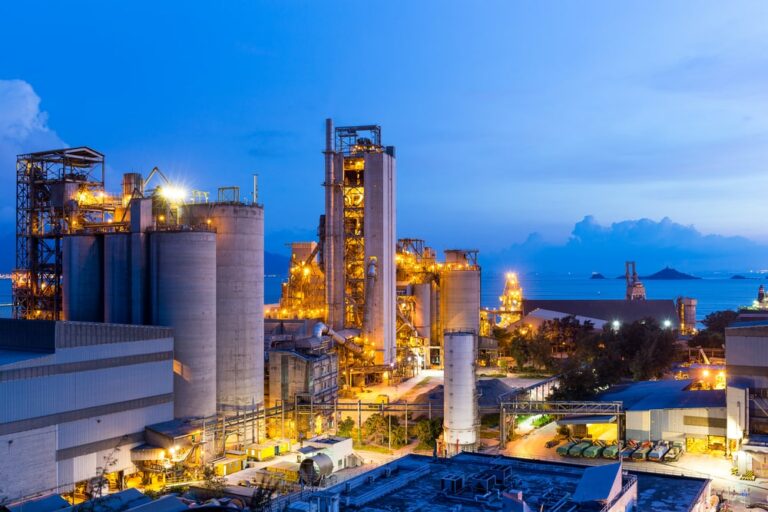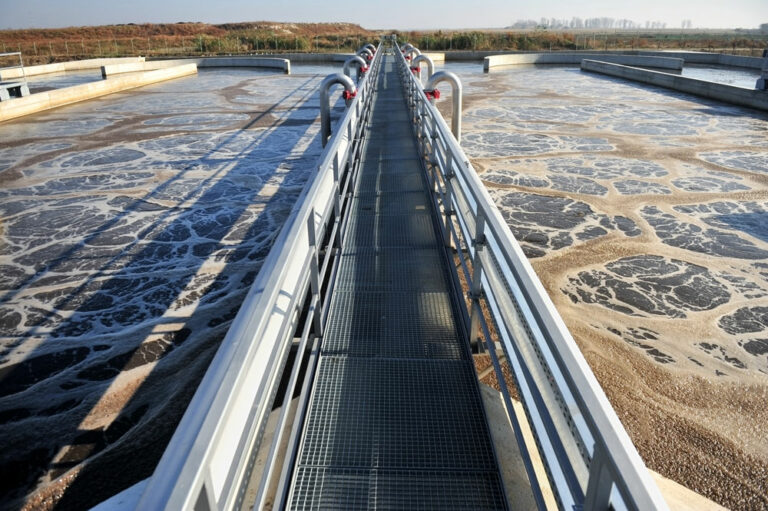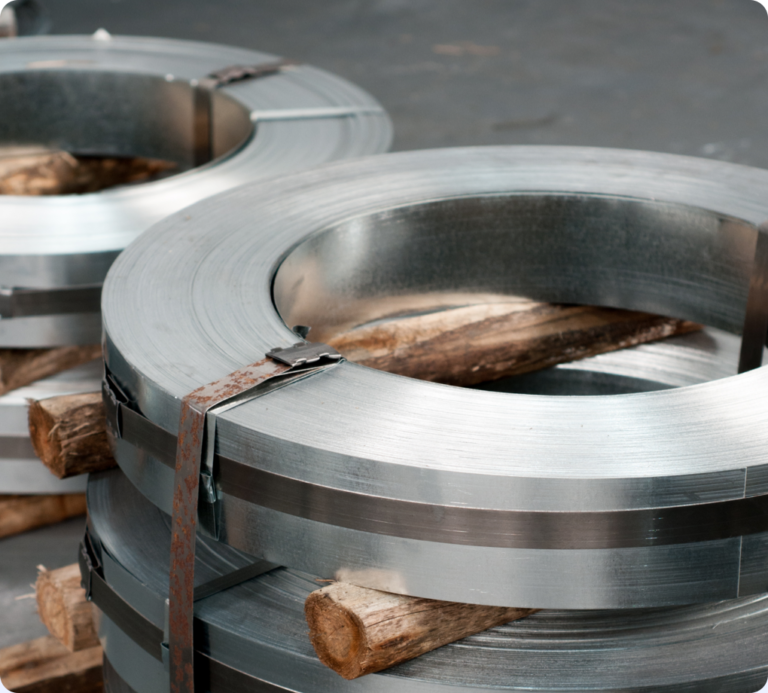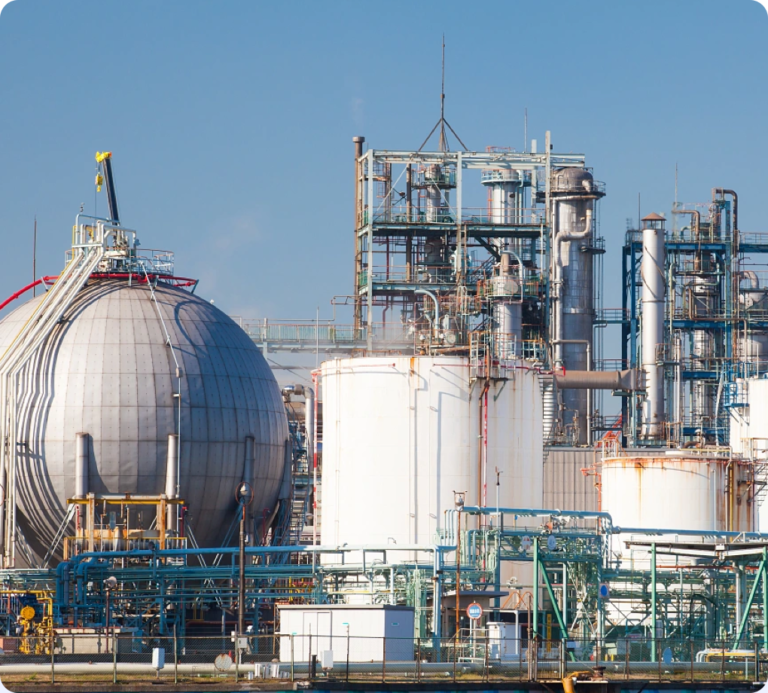The air suspension high pressure air blower for cleaning is a kind of centrifugal blower:under the high-speed rotation of the blower rotor, air will generate a dynamic pressure effect between the rotor and the surface of the foil bearing, forming a high-pressure air film to float the rotor. Due to the active oil-free air suspension bearing, no lubricating device is required, and the structure is simple and precise.
The air bearing blower is a product extended from the technology of the aircraft turbine engine. Its main core technologies are air suspension bearing technology, high-speed permanent magnet synchronous motor and its control technology. The air suspension bearing uses air as the working medium, the elastic flat foil (top foil) as the supporting surface, and the elastic wave foil (wave foil) as the supporting parts.high pressure air blower for cleaning
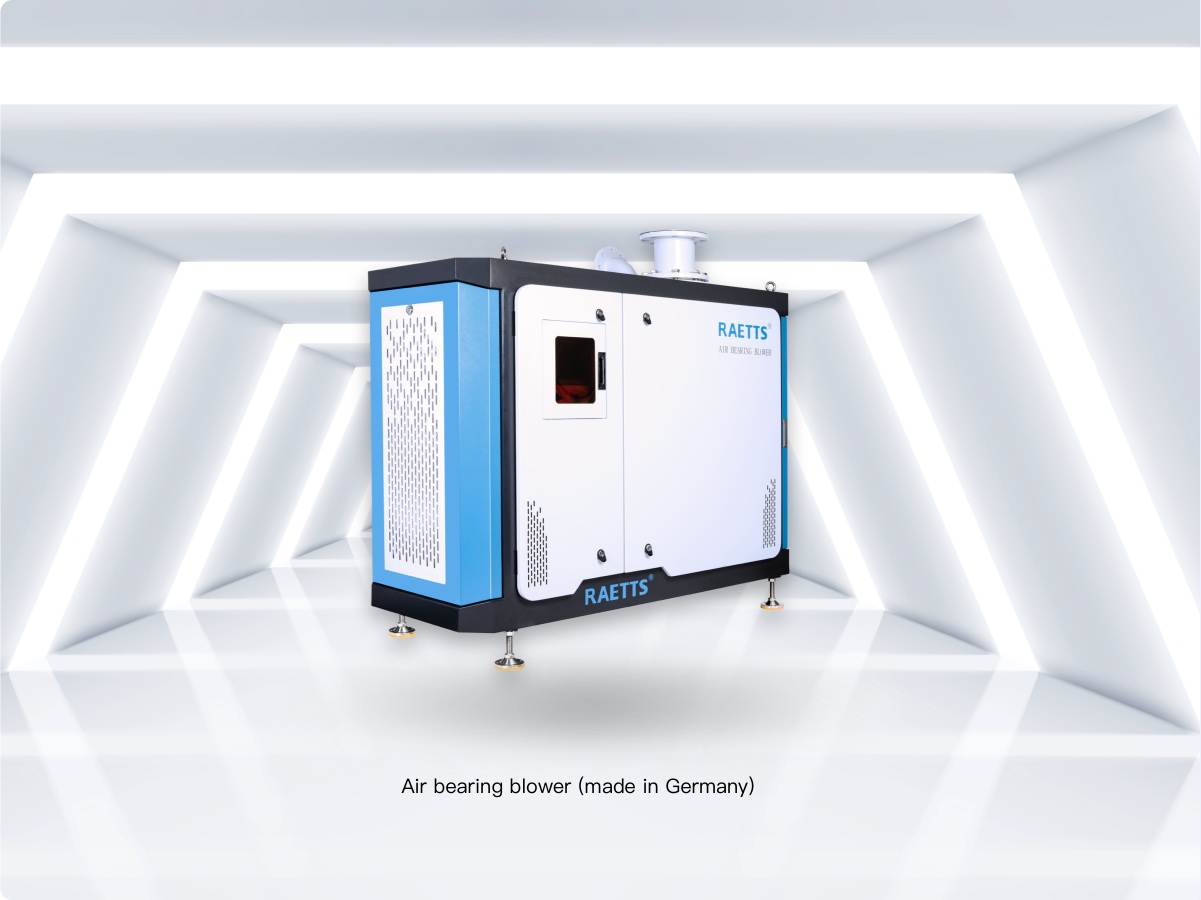
RAETTS high speed centrigal air blower,air blower rental
12 months warranty for the whole high pressure air blower for cleaning
high pressure air blower for cleaning 30% energy saving than traditional air blowers,5% energy saving than the same specifications air blowers
high pressure air blower for cleaning Product packing information:1pcs/package
payment info:T/T(30% advance payment,70% before shipment)air blower rental
Origin information:made in China
Selection parameters table
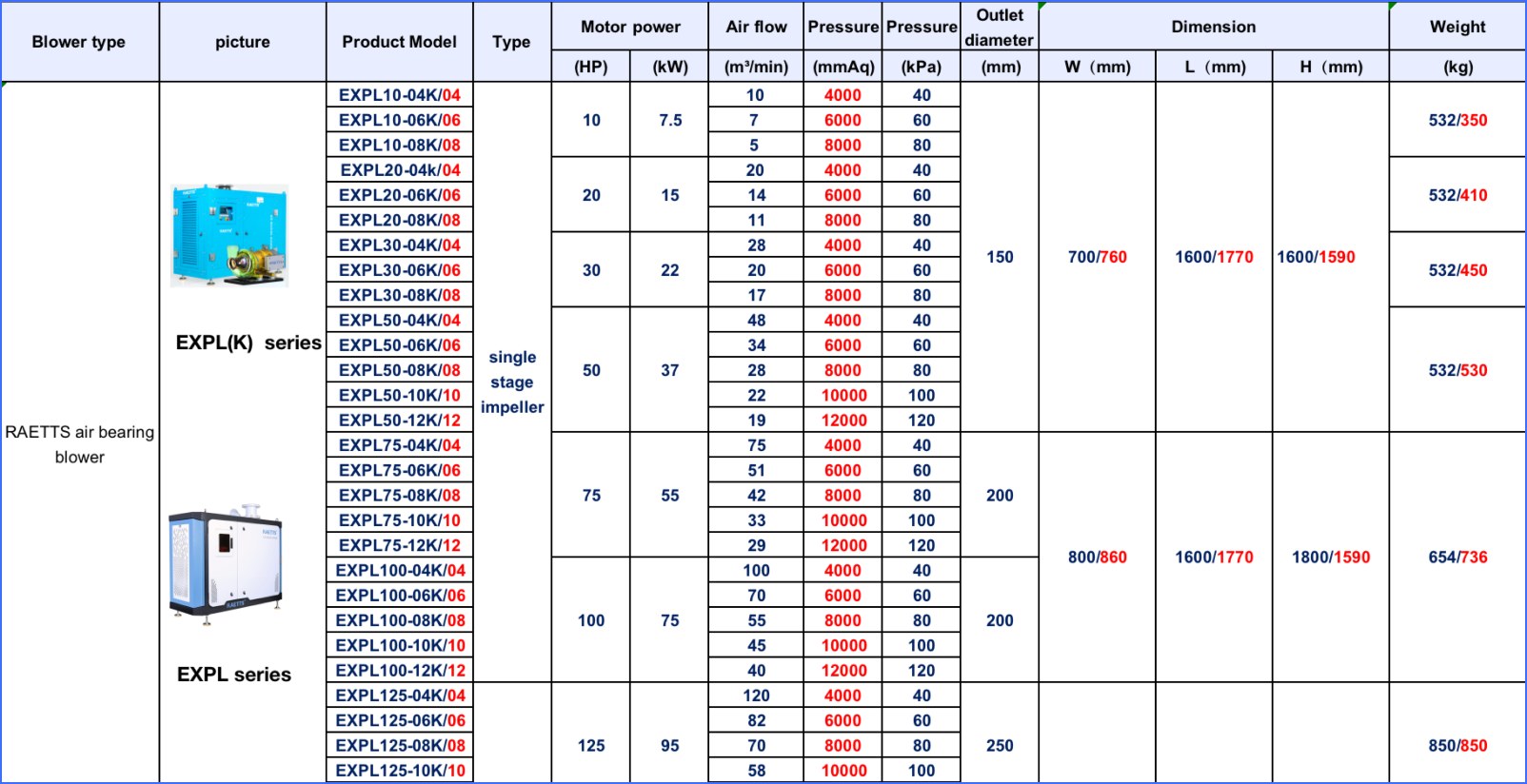
Air blower-An Ultimate FAQ Guide:
2.About high pressure air blower for cleaning patent
3.What is the operating temperature range of the air blower?
4.How to Properly Maintain and Extend the Lifespan of Your Air Blower?
5.About high pressure air blower for cleaning air blower origin
6.About high pressure air blower for cleaning raw material procurement system
7.What is the operating voltage of the air blower?
8.About high pressure air blower for cleaning raw materials
9.About high pressure air blower for cleaning production capacity
10.About high pressure air blower for cleaning production skills training
11.What are the different types of high pressure air blower for cleaning available in the market?
12.What are the key factors to consider when selecting an air blower for industrial use?
13.What Are the Common Noise Levels Associated with Different high pressure air blower for cleaning Models?
14.About high pressure air blower for cleaning delivery date
15.How does an high pressure air blower for cleaning work?
16.About high pressure air blower for cleaning quality system
17.About high pressure air blower for cleaning technology
18.How long is the service life of an high pressure air blower for cleaning?
19.How has air blower technology evolved over time?
20.About high pressure air blower for cleaning payment method
21.About high pressure air blower for cleaning MOQ
22.Which Industries Rely Heavily on Air Blowers for Operations?
23.About high pressure air blower for cleaning overseas warehouse
1.How Can an Air Blower Benefit Your Home or Industry?
An air blower is a mechanical device used to generate a flow of air or gas at high pressure. It works by using a motor to drive an impeller or fan, which creates a stream of air that can be directed towards a specific area. Air blowers can have a wide variety of applications, and they can greatly benefit both homes and industries in many ways. Here are some of the main benefits of using an air blower:
1. Ventilation and Cooling:
One of the primary benefits of an air blower is its ability to provide ventilation and cooling. In homes, air blowers can be used to circulate air and improve the overall air quality, which can be especially beneficial for those with respiratory issues or allergies. In industries, air blowers are often used to cool down machinery, preventing overheating and minimizing downtime.
2. Drying and Dehumidifying:
Air blowers can also be used to dry out damp or humid areas in both homes and industries. In homes, they can be used to dry out wet carpets, floors, and furniture after cleaning or flooding. In industries, they can help to reduce the humidity levels, which can not only improve the working conditions for employees but also prevent damage to equipment and products.
3. Dust and Debris Removal:
Air blowers can be used to blow away dust and debris on surfaces, making them useful for both homes and industries. They can be used to clean off surfaces such as floors, furniture, and machinery, making them especially useful in factories and workshops where dust and debris can accumulate quickly.
4. Aeration:
In industries such as wastewater treatment, air blowers are used to provide aeration, which is the process of introducing air into a liquid to increase oxygen levels. This promotes the growth of helpful microorganisms that help to break down organic matter and purify the water.
5. Pneumatic Conveying:
Air blowers are often used in industries for pneumatic conveying, which is the process of moving materials such as powders, granules, and pellets through pipelines using air or gas. This is a cost-effective and efficient way to transport materials, and it is commonly used in industries such as food processing, chemical processing, and pharmaceuticals.
6. Process Cooling:
In industries such as manufacturing and food processing, air blowers are used to provide process cooling, which involves blowing air onto a product or a specific area to cool it down. This is essential for maintaining the quality of products and preventing damage caused by high temperatures.
In conclusion, an air blower can greatly benefit both homes and industries by providing ventilation, cooling, drying, dehumidifying, dust removal, aeration, and process cooling. They are versatile and can be used in various applications, making them an essential tool for many different industries. If you are considering investing in an air blower, be sure to research the different types and models available to find the best one for your specific needs.
2.About high pressure air blower for cleaning patent
RAETTS won 5 Patents for invention, 18 Patents for utility models,3 Design patents +2 software copyrights,Dozens of patents under application,and formulated 1 Industrial standard and 2 Technical standards.
3.What is the operating temperature range of the air blower?
The operating temperature range of an air blower varies depending on the type and size of the blower. Generally, air blowers can operate at temperatures ranging from 40°F (4.4°C) to 250°F (121°C).
Smaller air blowers, such as those found in computers and electronic systems, operate within a much smaller temperature range. These systems typically run between 0°F and 140°F (-17.7°C and 60°C).
Large air blowers, such as those used in industrial or commercial settings, have a much wider operating temperature range. These systems can handle temperatures up to 500°F (260°C). At these temperatures, it is critical to monitor both the air blower and the actual output to ensure the system is not overworking or underperforming.
When designing an air blower system, it is important to select components that are rated for the particular operating temperature ranges. Components made out of materials that can withstand high temperatures, such as nickel-plated brass or stainless steel, are typically best suited for long-term use.
Since air blowers are intended for use in various temperature extremes, it is important to account for any potential changes during operation. Increases in air temperature can lead to decreased performance, while decreases in air temperature can result in decreased output.
Furthermore, all air blowers should be operated within a safe range of temperature to avoid any potential damage to the blower or the surrounding environment. For this reason, regular monitoring of the system should always be conducted to ensure the health and safety of everyone involved.
4.How to Properly Maintain and Extend the Lifespan of Your Air Blower?
Your air blower is an important machine that helps regulate the air you take in and the quality of air your environment receives. Properly keeping it functioning properly will not only help extend its lifespan significantly but also the useful life of other equipment around it. To help properly maintain your air blower and increase its longevity, follow these tips:
1. Clean the Intake.
Regularly check the intake filter and clean it using a damp cloth or vacuum cleaner. This will help ensure that dust and particles don’t build up and clog the engine.
2. Check for Foreign Objects.
Periodically check for any foreign objects inside and around the air blower. This can help you avoid any mishaps and keep your machine running smoothly.
3. Inspect the Interior.
It is important to occasionally disassemble the air blower and inspect the interior for any broken or worn-out parts. This will help you detect any potential problems and allow you to repair them before they can affect the machine’s performance.
4. Regularly Maintain and Service.
Regularly service and maintain your air blower by making sure all lubricants and fluids are replenished and parts are replaced if needed. This will ensure that all parts are functioning as they should, helping keep the machine working at its peak performance.
By following these steps, you can help ensure your air blower runs properly and prevent any potential problems that may lead to it needing replacement or repairs sooner than it should. With regular maintenance and care, your air blower can be in tip-top condition and have a longer lifespan.
5.About high pressure air blower for cleaning air blower origin
RAETTS air blower is made in China and made in Germany,we have factory both in China and Germany.
6.About high pressure air blower for cleaning raw material procurement system
RAETTS uses ERP management system to manage the suppliers and follow the raw materials production state.
7.What is the operating voltage of the air blower?
The operating voltage of an air blower typically depends on its size and power output. Most air blowers are designed to run on either 110V or 220V AC power. For example, a larger blower with more power may require a 220V power source while a smaller blower with less power may only need 110V. Additionally, it is important to note that many air blowers have both 110V and 220V models, and the user should choose the right model to match the existing power infrastructure of the given application.
8.About high pressure air blower for cleaning raw materials
RAETTS air blower impeller in made of aluminum alloy,enclosure material is carbon steel,rotor material is cast iron.If customers need other special materials,we can also customized according to customers requirements.
9.About high pressure air blower for cleaning production capacity
RAETTS production quantity for air bearing blower and maglev turbo blower is about 200pcs/month,for high speed centrifugal blower is about 700pcs/month.
10.About high pressure air blower for cleaning production skills training
RAETTS will train the production staffs for 3 months before they do production,including:machine operation,assembly,testing and so on.
11.What are the different types of high pressure air blower for cleaning available in the market?
For the industrial air blower,normally it is including side channel blower(also called ring blower),roots blower(also called lobe blower),single-stage centrifugal blower,multi-stage centrifugal blower,air foil bearing blowers and maglev turbo blowers.
12.What are the key factors to consider when selecting an air blower for industrial use?
The decision to choose an air blower for industrial use can depend on many factors. Here are the key factors that should be considered:
Power: Air blowers come with various power ratings, ranging from 0.2 kW to 25 kW, depending on the application. Choosing the right amount of power will help ensure optimal performance of the blower.
Design: The design of an air blower varies according to the application it is meant for. Depending on the need, choosing the right type of blower will help to ensure efficient and productive use.
Connectivity: Air blowers can be connected in several ways. Selecting the correct air blower with the right type of connection like plug type, air-cooled/water-cooled systems, or through a flexible hose is essential.
Durability: Air blowers come in different materials, some of which are cooler and stronger than others. Choosing the right material to suit the job requirements will ensure that the air blower has a longer service life.
Energy Efficiency: It is important to look for air blowers that have the best energy efficiency ratings. A blower with a high rating will consume less electricity and help reduce operational costs.
13.What Are the Common Noise Levels Associated with Different high pressure air blower for cleaning Models?
The noise levels associated with different air blower models depend largely on the size and operating speed of the blower. Smaller blowers tend to be quieter than larger ones. Generally, blowers with higher operating speeds will produce more noise than those running at lower speeds.
Centrifugal blowers tend to be the loudest of the three main types of air blowers. An air blower model with a 2-5 horsepower rating typically produces between 60 and 85 dB(A). Larger models with 5-10 horsepower ratings can usually produce between 75 and 100 dB(A).
Axial flow blowers are typically quieter, with an air blower model with a 2-5 horsepower rating usually producing between 50 and 75 dB(A). Models with 5-10 horsepower ratings usually produce between 65 and 90 dB(A).
Regenerative blowers are the quietest of the three main types of air blowers. An air blower model with a 2-5 horsepower rating usually produces between 45 and 70 dB(A). Models with 5-10 horsepower ratings usually produce between 55 and 85 dB(A).
It is important to note that noise levels associated with air blower models can vary significantly based on the design of the blower, the efficiency of the motor, and the environment in which it is operating. For instance, more efficient motors tend to generate less noise, and the noise levels generated by a blower can increase when it is operated in an environment with poor ventilation.
14.About high pressure air blower for cleaning delivery date
For the regular model air blowers(air suspension blower and maglev turbo blower) which RAETTS is producing,the common delivery time will be 30-40 days.For Super air blower and EXPLORER series high speed centrifugal air blower,delivery date is about 10 days.For some other R&D products,RAETTS delivery data is about 3-4 months.
15.How does an high pressure air blower for cleaning work?
The main structure of the air blower is including motor,shaft,bearing and impeller.When the motor is running,it will drive the shaft to run,then shaft drive bearing to run,then bearing drive the impeller to run.After the impeller runs,it will generate a vacuum area surrounding the impeller and suck the surrounding air inside.Then the air will be compressed by the impeller and discharged outside.
16.About high pressure air blower for cleaning quality system
RAETTS has quality management system certificate ISO9001:2015 and enviromental management system certificate ISO14001:2015.
17.About high pressure air blower for cleaning technology
RAETTS air bearing blower technology is originated from South Korea and maglev turbo blower technology is originated from Germany.RAETTS also have R&D team from Xi’an Jiaotong University.
18.How long is the service life of an high pressure air blower for cleaning?
The service life of an air blower can vary greatly depending on how it is used and maintained. Generally speaking, the life expectancy of an air blower can range from 10 to 20 years, but it can be extended significantly with proper maintenance.
One of the most important elements to ensuring the life of an air blower is proper installation. Before installation, it is important to consult with the manufacturer and ensure that the installation environment is adequate and not overly humid or dry. If the air blower is going to be exposed to any sort of corrosive or caustic atmosphere, additional measures such as protective coatings should be taken to reduce the potential for damage.
Regular maintenance is essential when it comes to air blowers. It is recommended that all filters be checked and changed every 6 months, and that any loosened mounting hardware should be re-torqued. Additionally, oil and grease should be applied to any moving parts to help reduce friction and extend its life.
The air blower should also be regularly inspected to ensure that the blades, bearings, and motors are undamaged and working properly. If any part of the air blower is not functioning correctly, it should be serviced immediately to ensure that it continues to operate efficiently and not risk any further damage to the machine.
Finally, it is important to note that the life of an air blower can be drastically reduced if it is misused or overworked. It is important to always use the blower within the limits recommended by the manufacturer to ensure that it has the proper service life. By following these recommendations, an air blower should last for at least 10 to 20 years, depending on the environment and how well it is maintained over time.
19.How has air blower technology evolved over time?
Air blower technology has evolved over time in many ways to make it more efficient, reliable, and cost-effective. Since the beginnings of air blower technology, blowers have become more tenacious and lighter due to the advent of composite materials and improved engineering techniques.
Initially, most air blowers were powered by combustion engines, typically gasoline or diesel. Despite their efficiency, combustion engines pose a number of potential safety hazards and may be expensive to run. Today, the majority of air blowers are powered by electric motors, sometimes referred to as “turbo” motors, which provide more power with greater energy efficiency.
As far as performance is concerned, most air blowers now feature variable-speed control, which allows users to adjust the airflow output to fit the requirements of the job. Variable-speed control not only makes air blowers more efficient but also reduces the amount of time needed for repairs and maintenance. Additionally, many air blowers today are manufactured with eco-friendly designs that help to reduce energy consumption.
To meet the needs of the commercial market, air blowers are now built with advanced features such as digital temperature control and pressure gauges. This allows users to precisely set the desired temperature and pressure for their applications, while other features like low-noise motors make them easier to operate in quiet environments.
Air blower technology continues to improve, and manufacturers are now putting out models capable of speeds up to 15,000 RPM. This high level of performance helps to increase the efficiency of an air blower’s airflow, resulting in a faster work rate and even greater energy savings.
Overall, air blower technology has seen tremendous improvement over the years, from combustion engines to digital temperature control and high-speed motors. These advancements have helped to bring air blowers into the modern age, offering users greater ease of use and energy efficiency.
20.About high pressure air blower for cleaning payment method
RAETTS accept payment by T/T(30% advance payment,70% before shipment)
21.About high pressure air blower for cleaning MOQ
Normally our MOQ for air blower is 1 set
22.Which Industries Rely Heavily on Air Blowers for Operations?
1. Manufacturing
2. Mining
3. Agriculture
4. Automotive
5. Food Processing
6. Plastics
7. Construction
8. Ventilation
9. Foundries
10. Powder Technology
23.About high pressure air blower for cleaning overseas warehouse
RAETTS is cooperating with global distributors,some distributors has stock or sample in their warehouse.For now,RAETTS has Germany factory warehouse,and we are building the USA warehouse.

